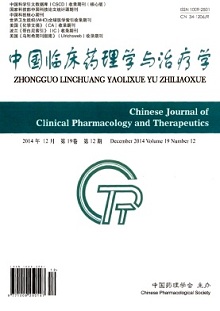Curcumin improves the impaired working memory in cerebral ischemia-reperfusion rats by inhibiting the stress response
JI Bin, LIU Xu-hua, YANG Fang-hua, ZHOU Rui, CAO Hong, LI Jun
2014, 19(12):
1321-1325.
 Asbtract
(
289 )
Asbtract
(
289 )
 PDF (240KB)
(
587
)
References |
Related Articles |
Metrics
PDF (240KB)
(
587
)
References |
Related Articles |
Metrics
AIM: To investigate the ameliorative effect of curcumin pretreatment against impaired spatial working memory on global cerebral ischemia-reperfusion rats and to explore its mechanism. METHODS: After trained on a modified T-maze, 120 adult SD rats were randomly divided into 5 groups: SHAM group, cerebral ischemia-reperfusion group (IR group), Curcumin group (CUR group), corticosterone group (CORT group) and Curcumin+CORT group (CUR+CORT group). Rats were treated with drugs or vehicles 1 h before 10min global cerebral ischemia. Six rats in each group 7 days after reperfusion were tested in T-maze. Six rats in each group were sacrificed at 2 h,1, 3 and 7d after reperfusion and their serum or brains were harvested. TUNEL assays were performed using the in situ cell death detection kit to detect the apoptosis neurons of CA1 area. Levels of serum corticosterone and hippocampi brain-derived neurotrophic factor(BDNF) was detected using ELISA procedure. RESULTS: Compared with SHAM group, corticosterone levels in IR group was increased (164±36 vs 92±24,P<0.05),and BDNF in hippocampiwas decreased (8.7±2.8 vs 19.4±5.1,P<0.05), apoptotic neurons in CA1 areas was increased (233±22 vs 21±4,P<0.01), and percentage of T-maze correct responses was decreased (65%±7% vs 87%±9%,P<0.05). Compared with IR group, serum corticosterone levels in CUR group was decreased (102±18, P<0.05), BDNF in hippocampi was increased (13.3±3.3, P<0.05), apoptotic neurons in CA1 areas was decreased (163±11, P<0.05), and percentage of T-maze correct responses was increased (79%±10%, P<0.05). Compared with IR group, CORT group hippocampi BDNF levels was decreased(4.4±1.2, P<0.05), apoptotic neurons in CA1 areas was increased(332±35, P<0.05), and percentage of T-maze correct responses was decreased(58%±6%, P<0.05). Compared with CORT group, hippocampi BDNF levels in CUR+CORT group was increased(10.5±2.3, P<0.05), apoptotic neurons in CA1 areas was decreased(211±27, P<0.05), and percentage of T-maze correct responses was increased (71%±12%, P<0.05). CONCLUSION: Curcumin pretreatment improves the impaired spatial working memory in global cerebral ischemia-reperfusion rats by inhibiting the stress response.


